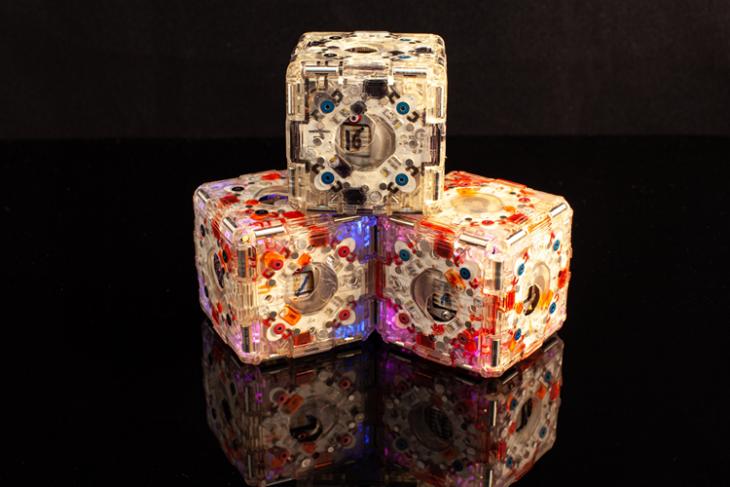These Robotic Cubes Are Capable of Clustering Together


Researchers from MIT's Computer science and Bogus Intelligence Laboratory (CSAIL) have developed self-assembling robotic cubes dubbed M-Block capable of climbing and rolling across the footing. These cubes are the second version of the project MIT unveiled dorsum in 2013.
With the new iteration, these Grand-Block cubes have gained the capability to communicate with one another using a "barcode-like system" nowadays on each face of the cube. This organization is used for performing diverse tasks like forming a line or following a path.
Each Thou-Block has a flywheel that does 20,000 revolutions per minute. Permanent magnets are equipped on each face so that cubes could attach to each other.
The researchers aim to improve Chiliad-Blocks to be used in disaster management situations. For instance, the researchers suggest these robotic cubes could be used for rescue operations by building a staircase in a building on fire.
"The unique thing about our approach is that it's inexpensive, robust, and potentially easier to scale to a million modules. M-Blocks tin motility in a full general manner. Other robotic systems have much more complicated movement mechanisms that require many steps, but our system is more scalable.", says John Romanishin, lead writer of the paper.
During testing, the researchers scattered the blocks and made them align to a line. At the end of the experiment, they noted that ninety percent of the blocks managed to grade a line. Incredible, indeed.
I hope these robotic cubes engineering science mature plenty to be a practical application rather than ending up in the laboratory because the proposed use-case. So, what are your thoughts on these self-assembling modular robots? Tell u.s. in the comments.
Source: https://beebom.com/robotic-cubes-m-block/
Posted by: baldwinaunity.blogspot.com


0 Response to "These Robotic Cubes Are Capable of Clustering Together"
Post a Comment